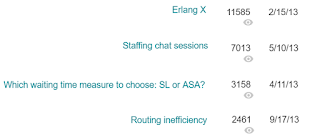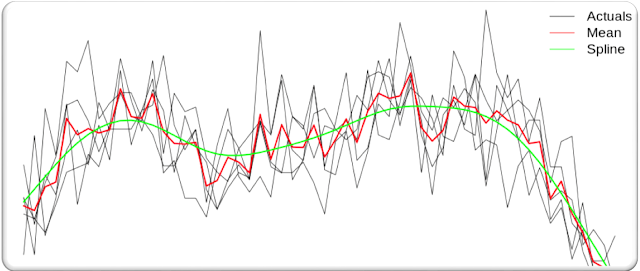Smoothing Spline – stop messing around and go smart on your time-series method
For those who are long time readers of the blog, you will remember reading some fantastic articles in 2013 by Ger Kool such as Erlang X, Staffing chat sessions, Which waiting time measure to choose: SL or ASA?, Routing inefficiency (CLICK article links highlighted if you have not yet read I highly recommend) which combined have generated 24,217 page-views for this blog at the time of me writing. Not bad for niche skill like WFM.
Also whilst I generally steer well clear of any selling on this blog, I really don’t mind plugging his brilliant book Call Center Optimization, which I have personally read (had to buy myself, Ger I am still waiting for that free copy) and can testify that for any contact centre professional out there, whether you are focused on WFM or not, it is worth buying and reading cover to cover.
It has been a while since I’d heard from Ger, I think he has been too busy skitouring as an instructor in the French and Dutch alpine clubs, and undertaking a long-distance triathlon in less than 12 hours – true fact and proving us geeks can do math’s as well as be Koole.
So over the moon to be contacted again by Ger for another great short article, which is a preview of a very in-depth and insightful White Paper “More precision with less data, a new approach to intra-day patterns” co-authored by Wout Bakker MSc, Giuseppe Catanese BSc, Ger Koole PhD, Siqiao Li BEng, and Alex Roubos PhD. I will include a link at the bottom of this article for those who would like further reading.
Over to you Ger!!
It is really possible: intra-day patterns better and easier
Each forecaster recognizes the following problem: you make an intra-day pattern by taking the (weighted) average of historical patterns, but to get a nice smooth pattern you have to go further back in time than you would like … the result is a non-representative pattern because you go back too many weeks, or a pattern that has characteristics of “overfitting”, random peaks and troughs that are not averaged out because you use too few days. The forecaster then accepts this diabolical dilemma, makes a non-optimal pattern and proceeds to the order of the day.
What if we stop muddling around and look for a smart method that makes nice smooth patterns with little data? Such a method exists and makes use of the fact that a smooth pattern does not make large leaps. In the accompanying graph you can see what such a “smoothing spline” looks like. In black you see 5 historical patterns, in red their average with significant ups and downs. The smoothing spline, however, is a nice smooth curve that predicts the underlying customer behavior much better. Even with one day of data, the spline is quite smooth and accurately predicts future patterns.
The moral of the story? Sometimes we are so used to using a certain method that we cannot imagine that something smarter exists: we do not know what we do not know. Mathematics and AI, in this case statistics, often contain methods that are perfectly applicable to WFM. The result: a better forecast with less effort. This nicely illustrates the existence of scientific methods that can make the work of the WFMer more fun and easier. I intend to be writing further blogs in the near future and will share and discuss more of these methods.
Want to read more about splines? CLICK HERE
Have a nice summer! Ger Koole.
http://www.gerkoole.com/






Responses